Everything About Annapurna Base Camp Trek – Distance & Hours
18th August 2025
.png)
The trek to Annapurna Base Camp is recognized as one of Nepal’s most breathtaking and sought-after hiking experiences. The trek through the Annapurna region combines stunning Himalayan views, vibrant local culture, and an unforgettable sense of achievement. Before embarking on this circuit, it’s essential to understand the trekking distance, daily walking hours, terrain, and practical tips for a safe and enjoyable journey.
This guide provides everything you need—from distances and daily walking schedules to altitude tips, cultural highlights, and packing advice—so you can prepare confidently for your Annapurna adventure.
How Long is the Annapurna Base Camp Trek?
On the classic Annapurna route, trekkers usually cover between 110 and 115 kilometers round-trip, though the exact distance can vary slightly depending on side excursions. This can vary depending on your starting point and any side trips, such as Poon Hill or Jhinu Danda hot springs.
- Starting from Nayapul or Siwai, the trek is about 70–75 km one-way, totaling approximately 110–120 km.
- Optional detours to viewpoints or hot springs can stretch the distance slightly, making it closer to 120 km round-trip.
Most adventurers complete the journey along the Annapurna circuit within 7 to 12 days, influenced by their fitness level, walking pace, and time taken for altitude acclimatization.
Why the distance varies:
- Starting from different trailheads (Nayapul, Siwai, or Ghandruk)
- Adding side trips like Poon Hill for sunrise views or Jhinu hot springs for relaxation
- Adjustments for altitude acclimatization or rest days
Daily Walking Hours
Most days on the circuit involve 4 to 7 hours of walking, with distances ranging from 9 to 15 km per day. Terrain varies between stone staircases, forest trails, and alpine ridges, making some days more challenging than others. Here’s a typical itinerary:
|
Day |
Route |
Distance |
Walking Hours |
|
1 |
Nayapul → Ulleri |
10 km |
5–6 hours |
|
2 |
Ulleri → Ghorepani |
11 km |
5–6 hours |
|
3 |
Ghorepani → Tadapani (via Poon Hill) |
~10 km |
5 hours |
|
4 |
Tadapani → Chhomrong |
~9 km |
4–5 hours |
|
5 |
Chhomrong → Himalaya |
~12 km |
6 hours |
|
6 |
Himalaya → Annapurna Base Camp |
~10–13 km |
5–7 hours |
|
7 |
Annapurna Base Camp → Bamboo |
~15 km |
6 hours |
|
8 |
Bamboo → Jhinu Danda (hot springs) |
~12 km |
5–6 hours |
|
9 |
Jhinu → Nayapul + Drive to Pokhara |
~11 km |
5 hours |
Trekking Day-by-Day Experience
Day 1–2: Nayapul to Ghorepani
The journey kicks off with a picturesque drive from Pokhara to Nayapul, the designated starting point for the trek. The early days pass through charming villages and terraced fields. The uphill climb to Ulleri is particularly memorable for its long stone staircases, providing a solid test of stamina and determination. Reaching Ghorepani introduces trekkers to cozy tea houses and the local Gurung culture along the Annapurna circuit.
Day 3: Sunrise at Poon Hill
An early morning hike to Poon Hill (3,210 m) is a highlight. Watching the first light hit the peaks of Annapurna and Dhaulagiri is unforgettable. The rest of the day continues through rhododendron forests to Tadapani, where quiet lodges offer stunning sunset views of the Annapurna range.
Day 4–5: Chhomrong and Himalaya
As the trail drops down to Chhomrong, trekkers pass the last major village before entering the Sanctuary, crossing suspension bridges, wandering through bamboo forests, and observing traditional village life. The day ends in Himalaya, where trekkers experience cooler air and high-altitude flora on the Annapurna circuit.
Day 6: Annapurna Base Camp
The final ascent to the base camp at 4,130 meters is the highlight of the circuit, offering panoramic views and a profound sense of achievement. You’ll hike past Machhapuchhre Base Camp and enter the Annapurna Sanctuary. Snowy peaks surround you, creating a 360-degree panoramic view that makes every step worth it.
Day 7–9: Descent and Relaxation
The return journey passes Bamboo, Jhinu Danda hot springs, and continues to Nayapul. The hot springs provide a soothing recovery for tired muscles after trekking the Annapurna circuit. The final drive back to Pokhara marks the completion of an unforgettable adventure.
Trek Difficulty and Preparation
Difficulty Level
The Annapurna circuit is considered moderate. While no technical climbing skills are needed, fitness is essential. Key challenges include:
- Altitude: Trek reaches 4,130 m, so proper acclimatization is vital.
- Stone staircases and steep paths: Physical stamina is tested daily.
- Variable weather: Conditions can change rapidly in the mountains of the Annapurna region.
How to Prepare
- Endurance training: Hikes of 8–10 km with elevation help build stamina.
- Packing: Bring essentials—lightweight clothing, trekking boots, warm layers, and rain gear suitable for the Annapurna circuit.
- Acclimatization: Stick to the suggested itinerary to minimize altitude sickness.
- Hydration and nutrition: Drink plenty of water and eat energy-rich foods during the trek.
Packing and Gear Tips
- Clothing: Layering is key. Base layers, fleece, and a waterproof jacket work best for Annapurna trekking.
- Footwear: Comfortable trekking boots with good grip are essential.
- Accessories: Hat, sunglasses, gloves, trekking poles, and a daypack.
- Health: First aid kit, personal medications, sunscreen, and lip balm.
- Electronics: Camera, portable charger, and power bank.
Cultural and Natural Highlights
- Villages: Walk through Gurung and Magar settlements, experiencing homestays and local traditions in the Annapurna region.
- Flora: Rhododendron forests bloom in spring, and alpine meadows are vivid in autumn along the Annapurna circuit.
- Wildlife: Spot Himalayan birds, monkeys, and occasionally small mammals.
- Hot Springs: Jhinu Danda offers natural relaxation after long trekking days in the Annapurna area.
Best Time to Trek
- Spring (March–May): Blooming flowers, pleasant temperatures, and clear skies over Annapurna peaks.
- Autumn (September–November): Stable weather, crisp views, and lively trails.
- Winter (December–February): Fewer crowds, colder temperatures, and snow-dusted peaks.
- Monsoon (June–August): Lush greenery, occasional landslides; ideal for solitude seekers on the circuit.
Why Choose the Annapurna Trek
- Breathtaking mountain scenery – Annapurna I, Machhapuchhre, and Hiunchuli dominate the landscape.
- Cultural immersion – Stay in traditional villages and enjoy authentic local cuisine.
- Variety of terrain – From terraced fields to alpine meadows, every day brings new scenery.
- Accessibility – Easier than Everest Base Camp; suitable for moderately fit trekkers.
Local Cuisine and Dining Along the Trek
One of the unique experiences on this trek is tasting the local cuisine in the mountain villages. Tea houses and lodges offer traditional dishes like dal bhat (lentil soup with rice), momo (dumplings), and freshly baked bread. Eating local food not only supports the communities along the circuit but also provides the energy needed for long trekking days. Many tea houses also serve herbal teas and local snacks, giving trekkers a chance to experience authentic Himalayan flavors. Vegetarian and vegan options are widely available, making it easy for everyone to enjoy meals during the journey.
Frequently Asked Questions (FAQs) About Annapurna Base Camp Trek
1. What is the total distance of the Annapurna Base Camp trek?
The standard Annapurna Base Camp trek covers approximately 110–115 km round-trip, depending on your starting point and optional detours like Poon Hill or Jhinu Danda hot springs along the circuit.
2. How many days does it take to complete the trek?
Most trekkers complete the journey in 7–12 days, depending on fitness level, pace, and acclimatization in the Annapurna region.
3. How many hours do you walk each day?
Daily walking typically ranges from 4 to 7 hours, covering 9–15 km per day on the Annapurna circuit.
4. What is the highest point of the trek?
The trek’s pinnacle is the Base Camp at 4,130 meters (13,550 feet), offering breathtaking panoramic views of peaks such as Annapurna I, Machhapuchhre, Hiunchuli, and the surrounding Himalayan range.
5. What is the best time to trek?
- Spring (March–May) – Clear skies and blooming rhododendrons
- Autumn (September–November) – Stable weather and stunning mountain views on the circuit
Winter and monsoon are possible but come with colder temperatures or heavy rainfall.
6. Is the trek suitable for beginners?
Yes, the Annapurna circuit is moderate and suitable for trekkers with basic fitness.
7. Do I need a guide or porter?
Bringing along a knowledgeable guide not only helps navigate the trail safely but also enriches your overall trekking experience.
8. What should I pack?
Layered clothing, trekking boots, trekking poles, first aid kit, personal medications, snacks, water, and portable charger are essential for the circuit.
9. Are there accommodation facilities along the trail?
Yes, tea houses and lodges are available in Ghorepani, Chhomrong, and Bamboo.
10. Can I experience hot springs?
Yes, Jhinu Danda is a natural hot spring along the Annapurna circuit, perfect for relaxing sore muscles.
Final Thoughts
The trek to Base Camp combines both physical challenge and rewarding views, leaving hikers with enduring memories and a strong sense of achievement. Covering 110–115 km in 7–12 days, it’s manageable yet demanding, with daily walks averaging 4–7 hours. Every step takes you closer to the breathtaking Annapurna Sanctuary along the circuit, where snow-capped peaks surround you and memories last a lifetime.
Ready to embark on this incredible Annapurna circuit journey? Nepal Horizon Treks offers expert guides, flexible itineraries, and full support to make your Annapurna adventure safe, memorable, and unforgettable. Contact Nepal horizon treks today to plan your trek!
Recent From Blogs

7th October 2025

27th September 2025
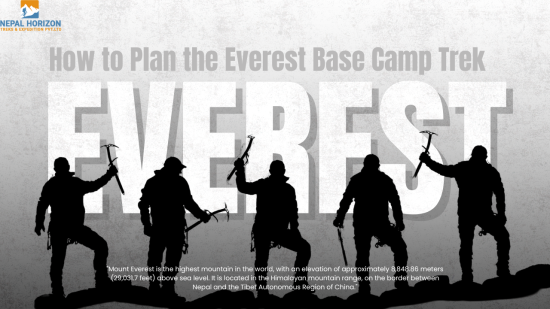
25th September 2025

22nd September 2025
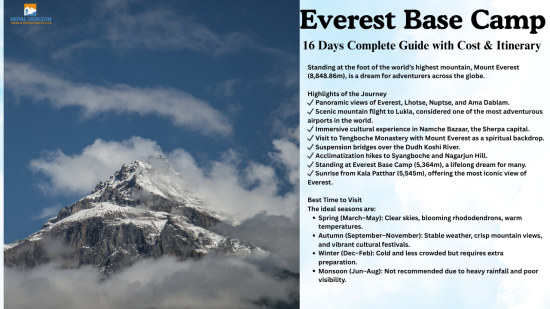
20th September 2025

17th September 2025
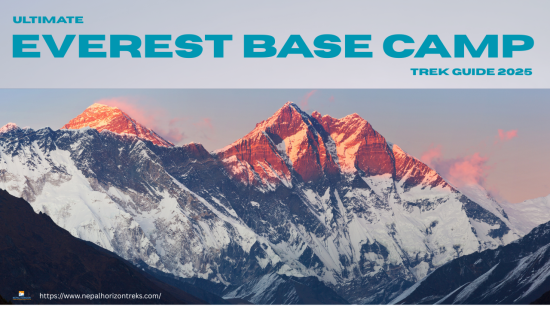
15th September 2025
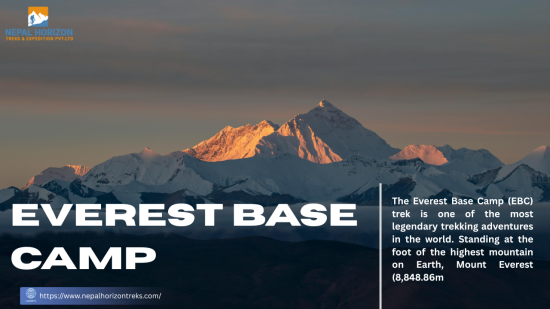
13th September 2025
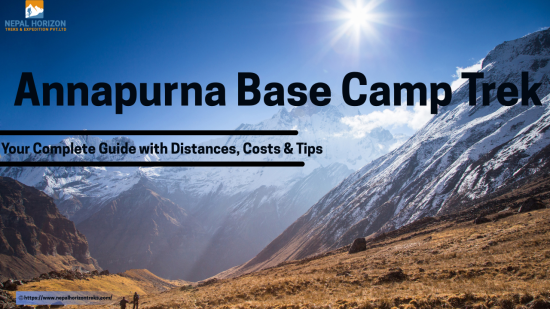
11th September 2025





